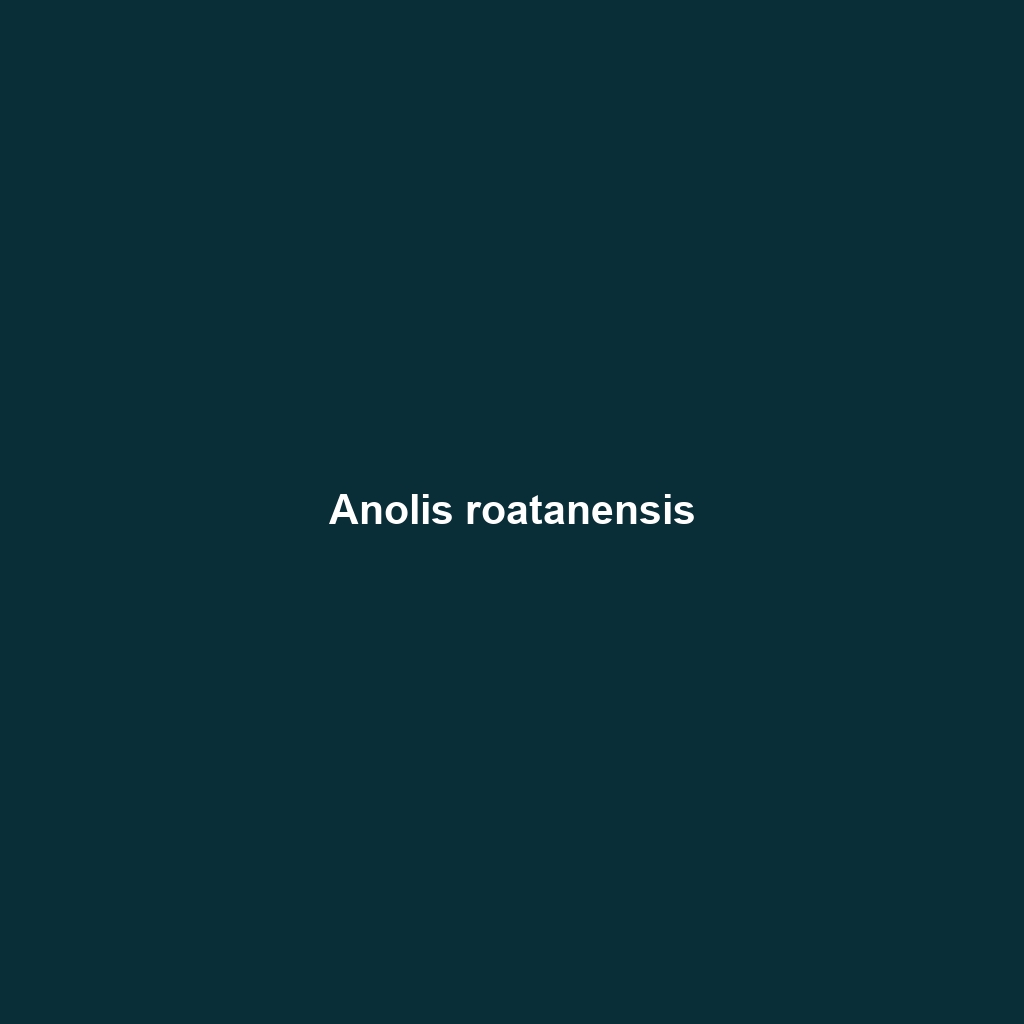Common Name: Anolis roatanensis
Scientific Name: Anolis roatanensis
Habitat:
Anolis roatanensis is primarily found in the tropical forests of Roatan, an island located off the northern coast of Honduras. This lizard thrives in humid, warm environments, favoring areas with dense foliage and primary forest cover. These habitats provide the necessary cover and basking sites essential for its survival.
Physical Characteristics:
Adults of Anolis roatanensis typically measure between 3 to 7 inches in length, showcasing a slender body shape that aids in agility. The coloration is quite striking, with males often exhibiting vibrant greens or blues, while females tend to have more muted tones with hints of brown or gray for camouflage. A distinctive feature of Anolis roatanensis is the large dewlaps present in males, used for communication and territorial displays.
Behavior:
Anolis roatanensis is known for its arboreal lifestyle, commonly seen climbing on trees and shrubs. It exhibits excellent territorial behavior, particularly during the breeding season, with males displaying vigorous head bobs and extending their dewlaps to attract females and deter rivals. This species is diurnal, active during daylight, which aligns with its feeding and mating behaviors.
Diet:
The diet of Anolis roatanensis consists mainly of small insects, such as crickets, moths, and spiders. This insectivorous diet allows for effective predation, with these lizards skillfully capturing prey using their quick reflexes. Occasionally, they may consume plant matter or small fruits, demonstrating some degree of dietary versatility.
Reproduction:
Anolis roatanensis typically breeds during the wet season, from late spring to early autumn. The female lays clutches of 1 to 2 eggs in hidden, moist environments, such as leaf litter or crevices in tree bark. The eggs incubate for several weeks before hatching, leading to the emergence of small, independently active hatchlings that mimic adult coloration and behaviors.
Conservation Status:
The conservation status of Anolis roatanensis is currently classified as Vulnerable due to its restricted range and habitat loss from urban development and deforestation on Roatan. Conservation efforts are crucial to protect this unique species and its habitat.
Interesting Facts:
One fascinating aspect of Anolis roatanensis is its ability to change color, a trait that not only aids in thermoregulation but also serves as a mechanism for communication among males and between sexes. Additionally, this species has been studied for its unique adaptation to the humid conditions of its native habitat, showcasing its specialization compared to other Anolis species.
Role in Ecosystem:
Anolis roatanensis plays a significant role in its ecosystem by controlling insect populations and serving as prey for local predators, including birds and larger reptiles. Its presence contributes to the biodiversity of Roatan’s tropical forests, making it an integral part of that ecological community.
